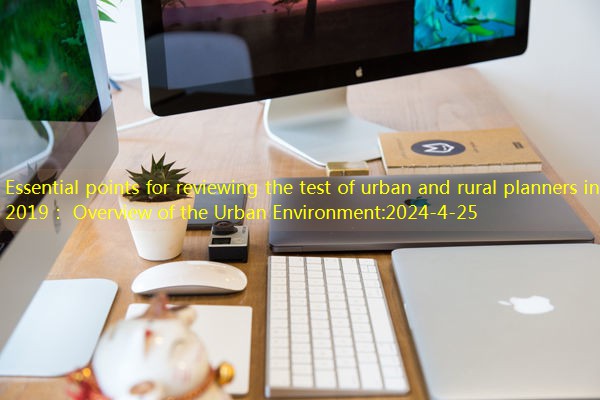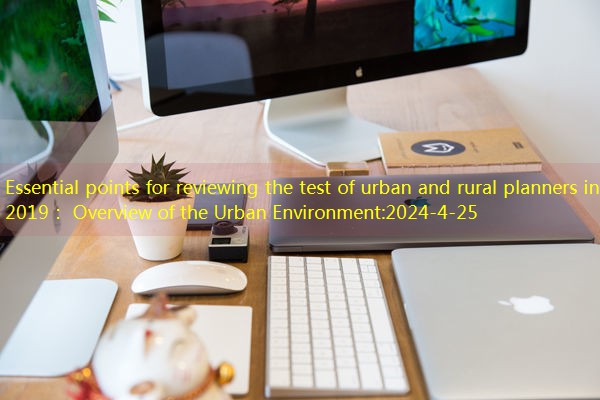[#Registered urban planner test##2019 registered urban and rural planner examination review points: Urban environment overview#] The 2019 urban and rural planner exams have some time, candidates enter the test preparation stage, today todayBleakWuyou Tao.com has compiled the main point for reviewing the 2019 registered urban and rural planner examination: Overview of the urban environment, I hope to help candidates, more simulation test questions and review information, please continue to pay attention toBleakUpdate of worry -free test network.
【Urban Environment Overview】
(1) Basic concept of the urban environment
UrbanVIRONMENT refers to various natural or artificial external conditions that affect urban human activities.The narrow urban environment mainly refers to the physical environment, including the natural environment and houses, roads, pipelines, infrastructure, different types of land use, waste gas, waste water, waste residue, waste residue, waste residue, waste residue, waste residue, waste residue, waste residue, waste residue, waste scumNoise such as noise.广义的城市环境除了物理环境外还包括人口分布及动态、服务设施、娱乐设施、社会生活等社会环境,资源、市场条件、就业、收入水平、经济基础、技术条件等经济环境以及风景、风貌、Aesthetic environment such as architectural characteristics, cultural relics and historic sites.The natural environment of the urban environment is the foundation of the urban environment. It provides a certain space area for the material entity of the city. It is a regional condition that the city depends on; the urban artificial environment is a matter infrastructure necessary for the various functions of the city.Without the artificial environment of the city, the differences between the city and other human settlements or the form of settlement will not be reflected, and the operation of the city itself will also be suppressed; the social environment of the city reflects the city’s living area that is different from the village and other settlements.Meet the conditions provided by human beings in various activities in cities; the economic environment of the city is a concentrated manifestation of urban production functions, reflecting the conditions and potential of urban economic development;External expression and reflection of charm.
(2) Urban environment capacity
The urban environment capacity refers to the limit of the environment and the activity of the city and the activities of people. Specifically, the environment of the city where the city is located, within a certain time, space, at a certain economic level and security and health requirements, at a certain economic level and security and health requirements, at the requirements of a certain economic level and security and health requirements, at the requirements of a certain economic level and security and health requirements, at the requirements of a certain economic level and security and health requirements, at the requirements of a certain economic level, and health and health requirements, at the requirements of a certain economic level, and health and health requirements, at the requirements of a certain economic level and security and health requirements, at the requirements of a certain economic level, and health and health requirements, at the requirements of a certain economic level, and health and health requirements, at the requirements of a certain economic level, and health and health requirements, at the requirements of a certain economic level and security and health requirements, at the requirements of a certain economic level and security and health requirements, at the requirements of a certain economic level, and health and health requirements, at the requirements of a certain economic level and security and health,Under the premise of meeting the normal progress of various activities such as urban production and life, through the common role of urban natural conditions, status conditions, economic conditions, social and cultural historical conditions, etc.,The allowable limit of intensity.The influencing factors of urban environmental capacity include urban natural conditions, urban factors (industrial, warehouses, living and living, public buildings, urban infrastructure, suburban supply, etc.), and economic and technological conditions.Urban environmental capacity includes urban population capacity, natural environment capacity, urban land capacity, urban industrial capacity, transportation capacity, building capacity, etc.
1. City population capacity
The urban population capacity is the number of urban population with a certain ecological environment and social environmental quality and a certain activity intensity that can be relatively continuously accommodated in a specific space area in a specific period.The concept of urban population capacity contains the following three aspects: First, it is within a specific space (city), and the population scale that can accommodate at a specific level of social productivity; secondIt is the population of a certain ecological environment quality and social living standards; third, the city’s ecological environment quality and social environment should not only meet the dynamic demand of a certain population scale (the various activities of these people in the city), but alsoIt should have relative time continuity.
2. Urban natural environment capacity
The natural environment capacity of the city includes atmospheric environment capacity, water environment capacity, soil environment capacity, etc., especially the previous two.
(1) Atmospheric environment capacity
It refers to the total amount of pollutants that can adalize the pollutants or the total amount of pollutants that can be allowed by the atmospheric environment of the atmospheric environment in a certain region to meet the conditions of the target value of the atmospheric environment (that is, the ecological balance and not exceeding the width value of the human health).Its size depends on the self -purification ability of the atmospheric environment in the area and the total amount of self -net media.In the broad value of the capacity, the atmospheric environment cannot exert its normal functions or uses. The virtuous circulation of ecology, the health of the crowd, and the material property of the material will be damaged.Studying atmospheric environment capacity can provide important basis for the formulation of regional standards for the control and the treatment of atmospheric pollution countermeasures.
(2) Water environment capacity
The water environment capacity refers to the load of pollution substances that can be adopted by urban regional water environment on the premise of meeting the use of urban water resources for the use of urban water resources.The capacity of the water environment is closely related to the self -net ability of the water body and the standard of water quality.In a specific area of the city, the water environment capacity is also manifested in the water resource reserves owned by the city (the most unfavorable conditions should be considered, such as the dry water season) that can meet the amount of water needed in the scale of a certain city, including living water, including living water for water, including living water for water., Using industrial water and farmland water.
(3) Soil environment capacity
Refers to the tolerance or load of soil to pollution substances.When the pollution substances entering the soil are lower than the soil capacity, the purification process of the soil becomes the leading aspect, and the soil quality can be guaranteed; when the pollution substances entering the soil exceed the soil capacity, the pollution process will become the leading aspect, and the soil is polluted.The soil environmental capacity depends on the nature of pollutants and the size of soil purification, and generally includes two aspects: absolute capacity and annual capacity.The soil environmental capacity is mainly used in the basis of environmental quality control and agricultural irrigation.
3. Urban industrial capacity
Urban industrial capacity refers to the limit of urban natural environmental conditions, urban resources and energy conditions, urban transportation location conditions, and the level of urban economic and technological development.In many cases, the development scale of urban industrial land is expressed.There are many factors that affect urban industrial capacity, such as the aforementioned population capacity, atmospheric environment capacity, and water environment capacity.There are also researchers based on the proportion of urban construction land in industrial land, and the relationship between industrial land and the proportion of residential land and compare the national norms to compare the conclusions of industrial capacity.
4. Urban traffic capacity

